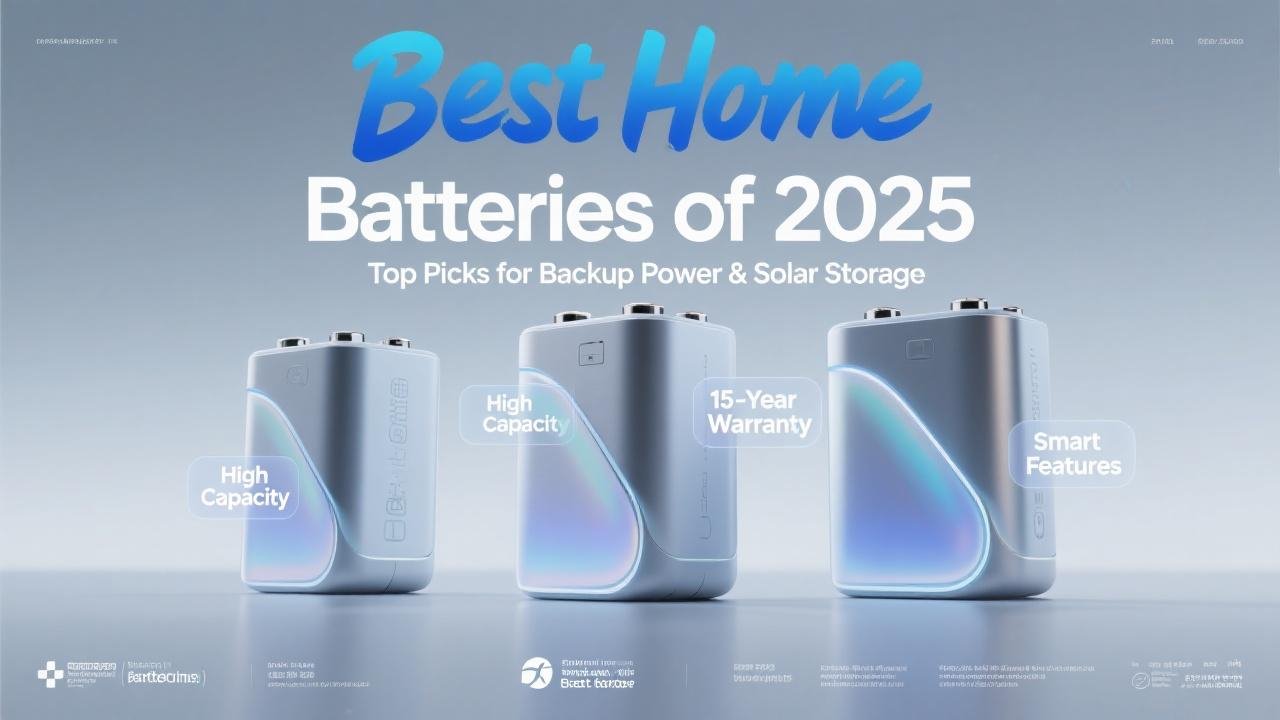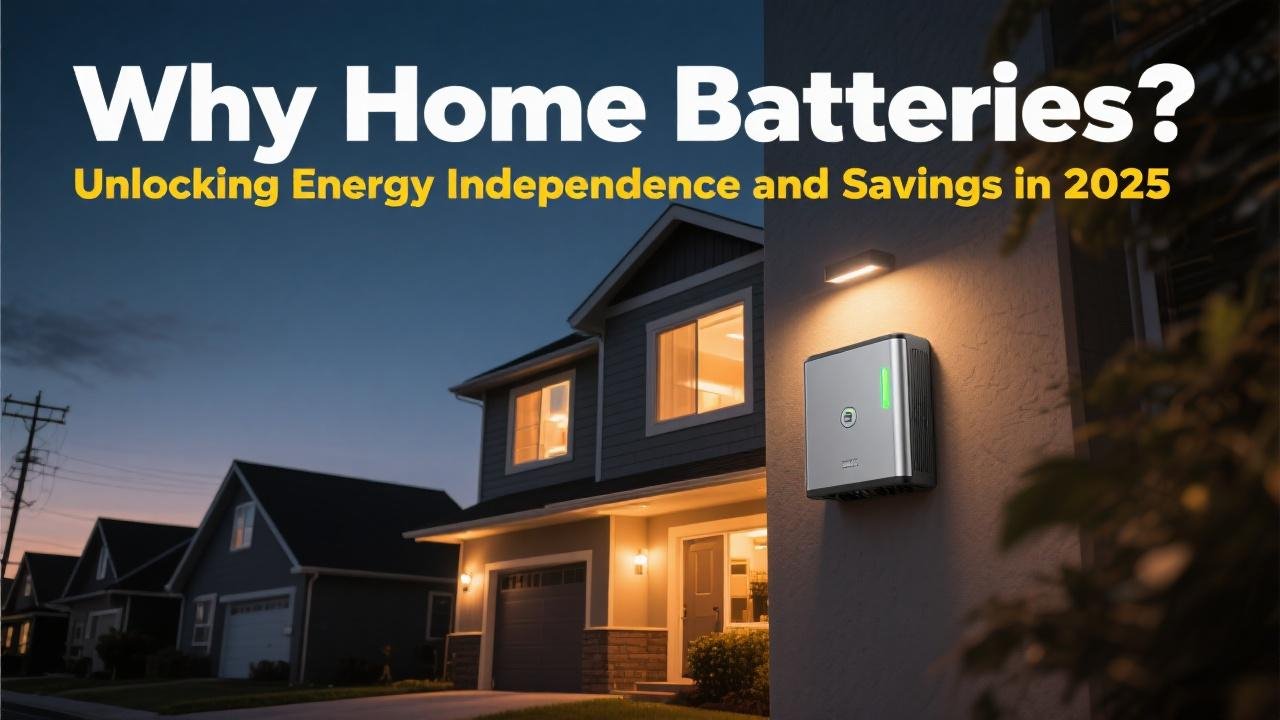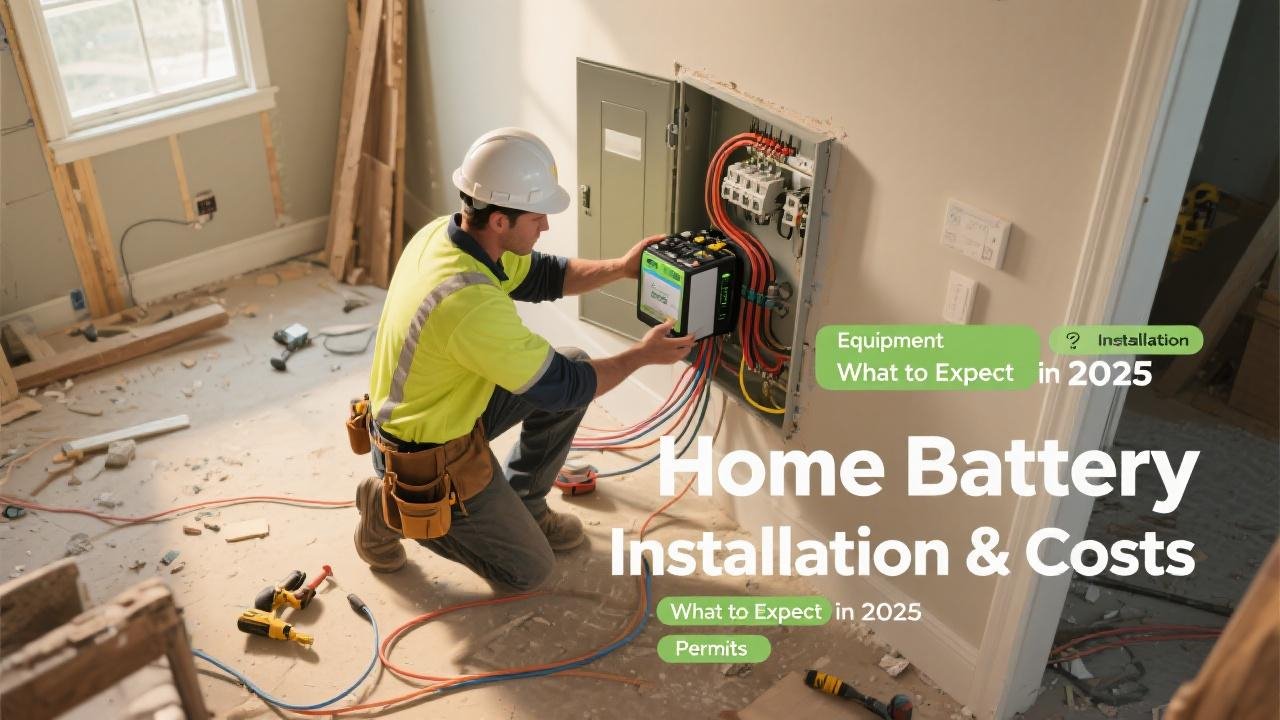Introduction: Choosing Your Home’s Energy Powerhouse
As solar adoption continues to surge, homeowners are increasingly looking to maximize their energy independence and resilience with home battery storage. In 2025, the market for solar batteries is more dynamic than ever, offering a range of options with varying capacities, power outputs, efficiencies, and warranties. Selecting the right battery is crucial for ensuring reliable backup power, optimizing your solar energy usage, and achieving the best possible return on your investment.
This guide, presented as an EnergySage partner resource, dives into some of the best home batteries available in 2025, highlighting their key features and helping you understand what to look for. Remember, comparing quotes and options through a trusted platform like EnergySage can help you find the perfect battery solution from vetted installers.
Key Factors When Comparing Home Batteries:
Before we look at specific brands, let’s outline the critical metrics for evaluating home batteries:
- Usable Capacity (kWh): This is the amount of electricity the battery can store and deliver. Consider your daily energy needs and what you want to power during an outage.
- Power Output (kW): This indicates how many appliances the battery can run simultaneously. It’s often listed as continuous power and peak power (for short bursts).
- Round-Trip Efficiency (%): This measures how much energy is retained during a full charge and discharge cycle. Higher is better (typically 80-95%).
- Depth of Discharge (DoD %): The percentage of the battery’s total capacity that can be safely used. Higher DoD means you can use more of the stored energy (many modern lithium-ion batteries offer 90-100% DoD).
- Warranty: Look for a long warranty period (typically 10-15 years) and a good end-of-warranty capacity guarantee (e.g., guaranteeing at least 70-80% of original capacity). Some also offer an “unlimited cycles” warranty.
- Chemistry: Most modern home batteries use Lithium Iron Phosphate (LFP) or Nickel Manganese Cobalt (NMC) chemistry. LFP is known for its safety and longevity.
- Modularity: Can you easily add more battery units later to expand your storage capacity?
- Price and Installation Cost: Consider the cost per kWh and the total installed cost. Remember that batteries charged by solar are eligible for the 30% federal tax credit.
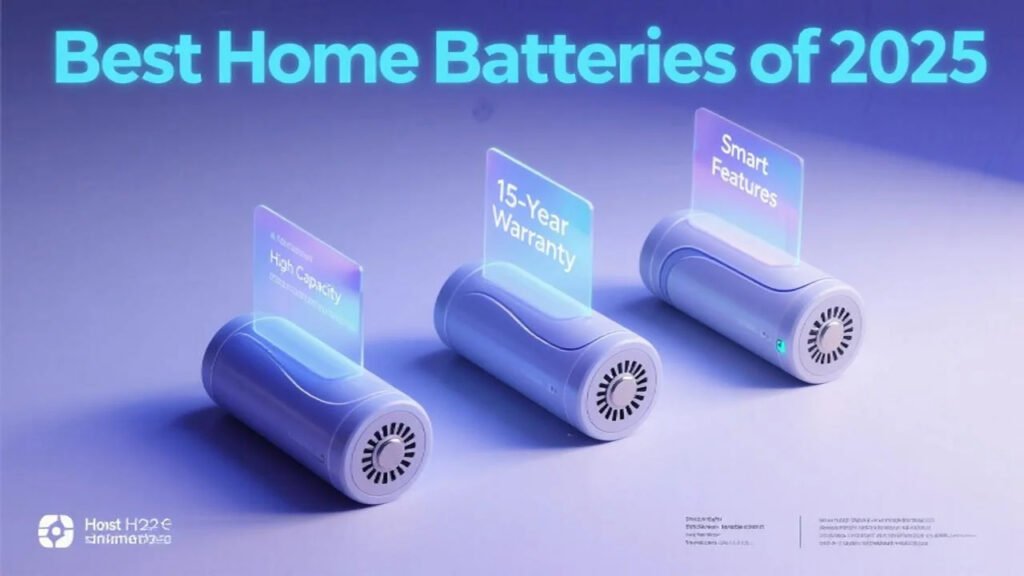
Top Home Battery Picks for 2025:
Based on industry reviews and performance data, here are some of the leading home battery storage solutions for 2025:
1. Bluetti EP900 (with B500 units)
- Overview: CNET’s best overall pick for 2025, praised for its powerful and modular design, and price transparency.
- Key Features: Stackable inverter and B500 battery units.
- Usable Capacity: Modular, from ~9 kWh (2x B500) up to 39.6 kWh (with an additional system).
- Power Output: 9 kW continuous per system (or 18 kW with two systems).
- Round-Trip Efficiency: 85%.
- Depth of Discharge: 90%.
- Warranty: 10-year, 80% capacity guarantee.
- Pros: High power, modularity, clear pricing on their website.
- Cons: Slightly lower efficiency and DoD compared to some peers.
- Price Indication: ~$1,000-$1,200/kWh (product cost, installation separate).
2. Tesla Powerwall 3
- Overview: A well-rounded battery with significant improvements over the Powerwall 2, particularly in power output.
- Key Features: Integrated solar inverter in some configurations.
- Usable Capacity: 13.5 kWh (not modular, buy additional units for more capacity).
- Power Output: 11.5 kW continuous.
- Round-Trip Efficiency: 89% (solar-to-battery-to-home).
- Depth of Discharge: Typically 100%.
- Warranty: Expected 10-year, unlimited cycles (similar to Powerwall 2).
- Pros: High power output, strong brand recognition, good overall performance.
- Cons: Limited modularity, concerns about customer support, lacks upfront price transparency (requires installer quote).
- Price Indication: Starts around $7,500 before installation; often ~$1,000-$1,500/kWh installed.
3. Enphase IQ Battery 5P
- Overview: A powerful option for its size, often highlighted as a top pick for home storage, especially for those already in or considering the Enphase ecosystem.
- Key Features: Integrates seamlessly with Enphase microinverters, LFP chemistry.
- Usable Capacity: 5 kWh per unit (buy multiples for more capacity).
- Power Output: 3.84 kW continuous / 7.68 kW peak per unit.
- Round-Trip Efficiency: 90%.
- Depth of Discharge: 98%.
- Warranty: Strong 15-year warranty, unlimited cycles.
- Pros: High power for its size, excellent warranty, robust customer support options, LFP safety.
- Cons: Not modular in the sense of incremental upgrades within a single unit; lacks price transparency from Enphase directly.
- Price Indication: Around $7,000 installed per 5kWh unit (approx. $1,400/kWh).
4. Generac PWRcell
- Overview: A highly modular system allowing for flexible capacity upgrades.
- Key Features: Battery cabinet with individual battery modules.
- Usable Capacity: 9-18 kWh per cabinet (expandable in 3 kWh increments), up to 36 kWh with two cabinets.
- Power Output: Good performance, specific kW not always detailed by reviewers.
- Round-Trip Efficiency: High at 96.5%.
- Depth of Discharge: 84% (lower than some competitors).
- Warranty: Described as “lackluster” by some reviewers.
- Pros: Excellent modularity, good efficiency, good customer support options.
- Cons: Lower DoD, warranty concerns, no public pricing (installer quote needed).
- Price Indication: Varies by installer.
5. SolarEdge Home Battery
- Overview: Known for its excellent warranty and high round-trip efficiency, making it a well-rounded performer.
- Key Features: Integrates well with SolarEdge inverters.
- Usable Capacity: 9.7 kWh (not modular, add another unit for more capacity).
- Power Output: 5 kW continuous / 7.5 kW peak.
- Round-Trip Efficiency: Very high at 94.5%.
- Depth of Discharge: 100%.
- Warranty: Excellent unlimited cycle warranty (typically 10 years).
- Pros: Top-tier warranty, high efficiency, good overall performance.
- Cons: Lacking some customer support options, no direct price transparency, not modular.
- Price Indication: Varies by installer; one source indicated ~$1,683/kWh.
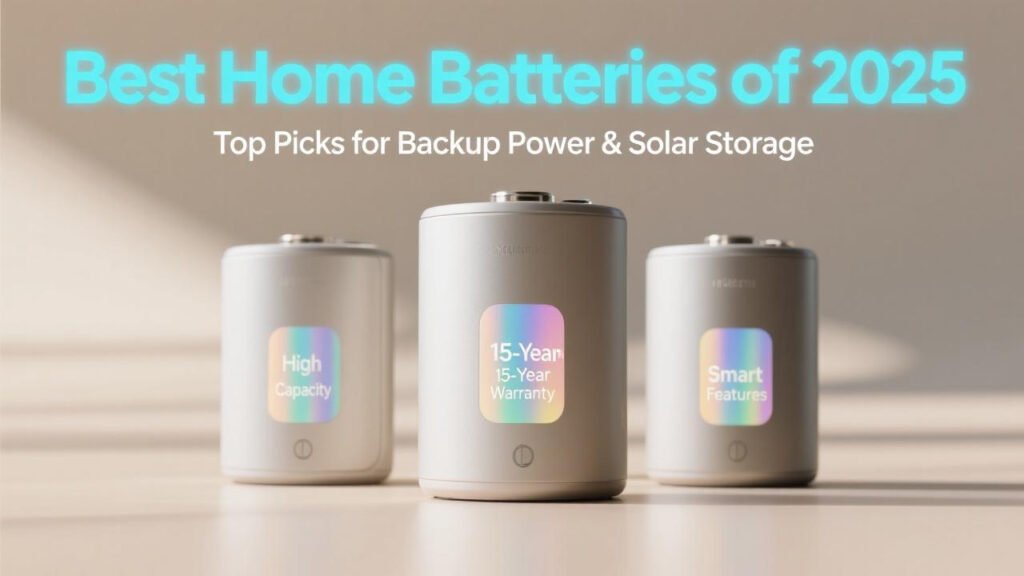
Table: At-a-Glance Comparison of Top Home Batteries 2025
| Feature | Bluetti EP900 | Tesla Powerwall 3 | Enphase IQ 5P | Generac PWRcell | SolarEdge Home Battery |
|---|---|---|---|---|---|
| Usable Capacity | 9-39.6 kWh (Mod) | 13.5 kWh | 5 kWh (per unit) | 9-36 kWh (Mod) | 9.7 kWh |
| Cont. Power | 9 kW | 11.5 kW | 3.84 kW | Varies | 5 kW |
| Round-Trip Eff. | 85% | 89% | 90% | 96.5% | 94.5% |
| Warranty (Years) | 10 | 10 (exp.) | 15 | Varies (concerns) | 10 (unlimited cycles) |
| Modularity | Yes | No | Per Unit | Yes | No |
| Price Transparency | Good | Low | Low | Low | Low |
Data compiled from CNET and NRG Clean Power reviews. Always verify current specs with installers.
Making Your Choice with EnergySage
Selecting the best home battery involves balancing capacity, power, efficiency, warranty, and cost with your specific energy needs, solar system size, and budget. It’s also crucial to consider how well a battery integrates with your existing or planned solar inverter.
EnergySage simplifies this complex decision-making process:
- Compare Multiple Offers: Receive quotes from EnergySage’s network of 500+ vetted local installers, often including various battery options.
- Expert, Unbiased Advice: EnergySage’s Energy Advisors provide free, personalized guidance to help you understand the pros and cons of different batteries and how they fit your solar setup.
- Transparent Information: Access detailed information and reviews on various battery brands and installers in one place.
Powering Your Energy Future
The best home battery for you in 2025 will depend on your unique circumstances. Whether you prioritize maximum backup power, the highest efficiency, modularity for future expansion, or the longest warranty, there’s a quality option available. By understanding the key features and comparing top brands like Bluetti, Tesla, Enphase, Generac, and SolarEdge, you can make an informed decision.
Leverage the resources and expertise available through EnergySage to compare quotes, get unbiased advice, and confidently choose the home battery system that will best serve your energy storage and backup power needs for years to come.

